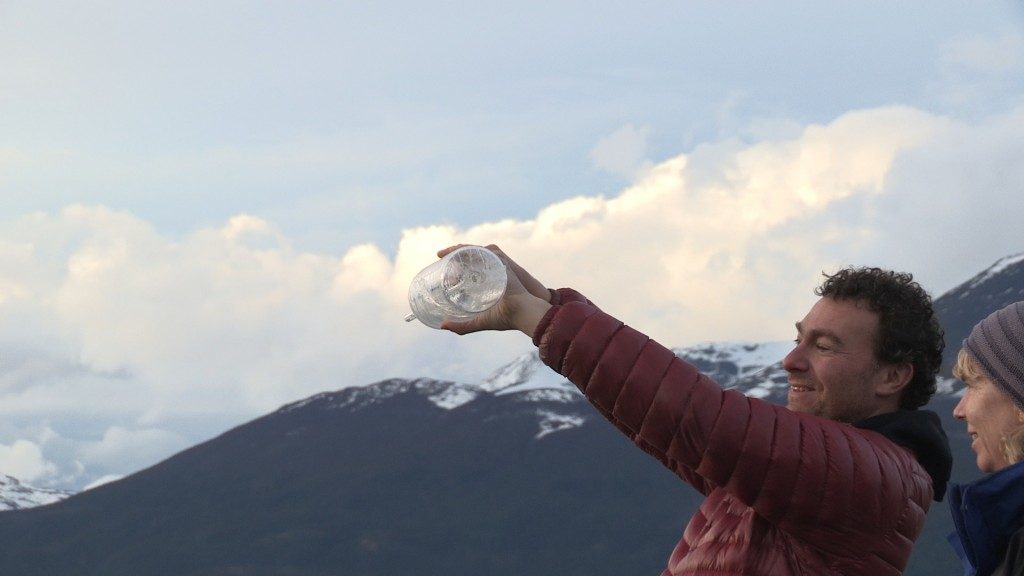NEXER: an extreme state network to strengthen science

One of the great changes experienced by the state universities during the term of Michelle Bachelet, is related to their way of relating to each other and to the Ministry of Education.
Since 2015, the usual delivery of baseline funds has been made in exchange for compliance with a Framework Agreement, where each state institution is committed to improving its performance. By concentrating just 15% of tuition fees nationwide, the 18 state universities change the logic of competition for that of collaboration, working together to mutually strengthen their weaknesses, and level their quality, regardless of geographic location. This is how the networks of management, linking, undergraduate, art, culture and heritage, communications, quality assurance, institutional analysis, prevention of student drug use, coordination and research are born.
One of the first research networks was formed between the Universities of Magallanes (UMAG), Antofagasta (UA) and de la Frontera (UFRO), to study organisms and extreme environments. Recently, they launched a contest to encourage joint studies. Four projects won; One of them is the NEXER-UMAG Network, which brings together about thirty researchers and more than 5 institutions dedicated to science and education, under the direction of the UMAG.
Extreme environments and organisms
The Doctor in Oceanography and research coordinator of the GAIA Antarctic Research Center (CIGA), Ricardo De Pol-Holz, is the director of NEXER-UMAG, an initiative that concludes in October 2020, and brings together several researchers with different projects individual, depending on a general theme.
“What we did, basically, was to bring together many people under a conceptual umbrella, which was to say ‘let’s study carbon dynamics in this extreme region, and compare it with other extreme regions,’” says De Pol, adding that “there had to be , by obligation, a researcher from each university ”. The result was 7 research groups, within each one there is a principal investigator who, with competitive funds, is executing his own and related project. With this, the studies are financed because, as De Pol explains, the resources of the framework agreement are basically destined to “generate cohesion, in order to offer meeting points, passages, some essential things. Obviously, what we are going to do is much more expensive than the 70 million we have per year. ”
Studying the dynamics of carbon in the Anthropocene – which is the title they chose to support the proposal of a new geological era that left the Holocene behind, because of the incomparable influence that the human species has had on the future of the planet – is vital to understand Climate change and global warming.

This project “has a lot of international collaboration,” says De Pol with satisfaction, regarding partnerships with universities and research institutes in other countries. It has also achieved regional collaboration, such as with the Wildlife Conservation Society (WCS), a foundation that, in exchange for gathering technical information and data from Karukinka Park that they maintain in Tierra del Fuego, provides them with free infrastructure and logistics, in a place where Patagonia that has connectivity and appropriate conditions for the current and future study of carbon.
“For example,” says the researcher, “there is a complete valley, the Patience Valley, or several parts of Karukinka, where they will eliminate the beaver, completely. So, we want to see how carbon dynamics work in these environments that are already modified by the presence of the beaver, which is an anthropogenic effect in the background, because it is an introduced species. ” The intention of the scientists is to see how they are, at this time, flows of greenhouse gases, metabolic pathways, biogeochemical conditions of the estuaries and rivers, coastal organisms, environmental conditions and other baselines, in a limited place, for once The beaver is exterminated, monitor how they change over time. “That is the value of doing Karukinka,” says De Pol, “because we cannot study the entire region.”
The marine biologist values the establishment of these virtuous alliances here in Magellan, “because we are very few actors, and here all hands serve.” In fact, they also want to incorporate citizens into monitoring, specifically, in Puerto Williams, where they have already made the first sampling for a series of atmospheric radiocarbon time in the commune of Cabo de Hornos. Basically, they took atmospheric air in a bottle.
“We are going to empower society – says the director of the network – so that the school kids will take it, and so on. Imagine how it would be for the people of Puerto Williams to know that they are being the true sentinels of global change. Because that radiocarbon measurement is a direct measurement of how the southern ocean is functioning, then it is a globally affecting issue. And there is not a series of time so south. Any”.
Projections of a “sexy” polo
There is an expression with which researchers rate what is very interesting: ‘sexy’. This adjective applies to a region that can contribute so much in the characterization of the Anthropocene. The growing migration of scientists and the strong state investment in research centers are data that confirm their attractiveness.
For De Pol this is an opportunity. In fact, that is why NEXER-UMAG is possible, “a very new initiative in terms of associativity of state universities, which is the way we will be able to get ahead,” he says. “This has to be the springboard for many of the researchers, can apply with this data based on research funds. This is a first action to be able to equate the balance a bit in that sense ”.
Source: http://www.umag.cl/vcm/?p=28559
